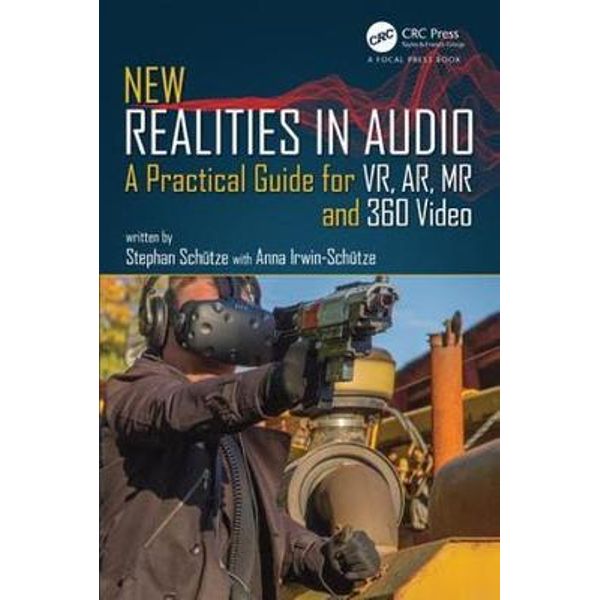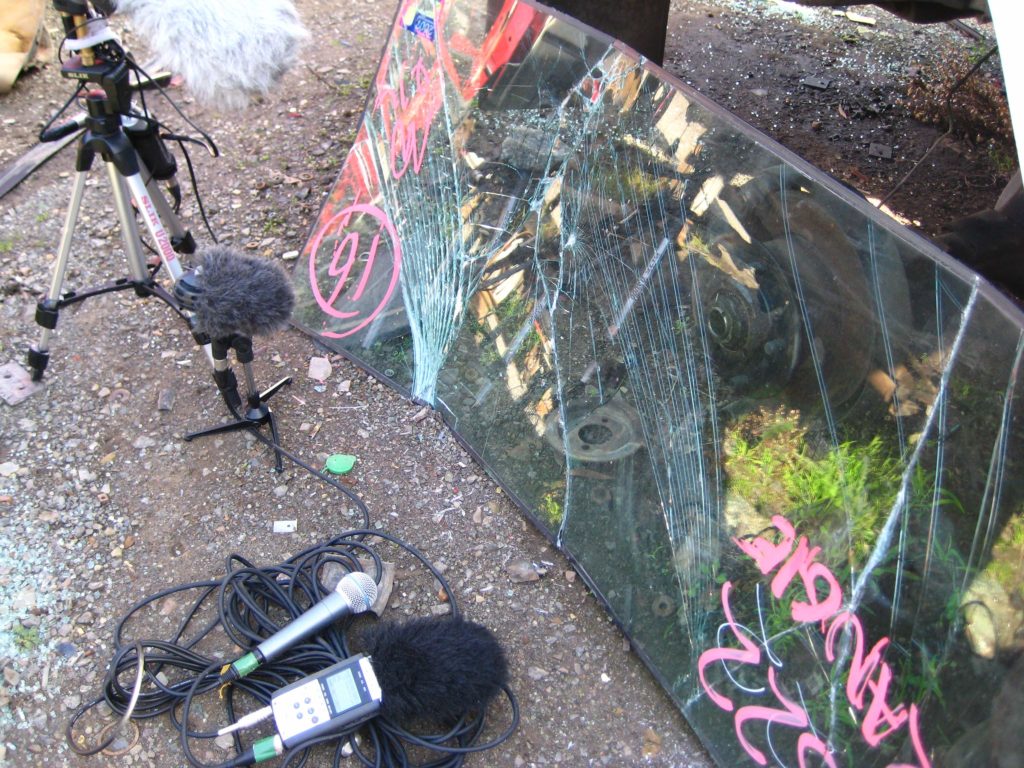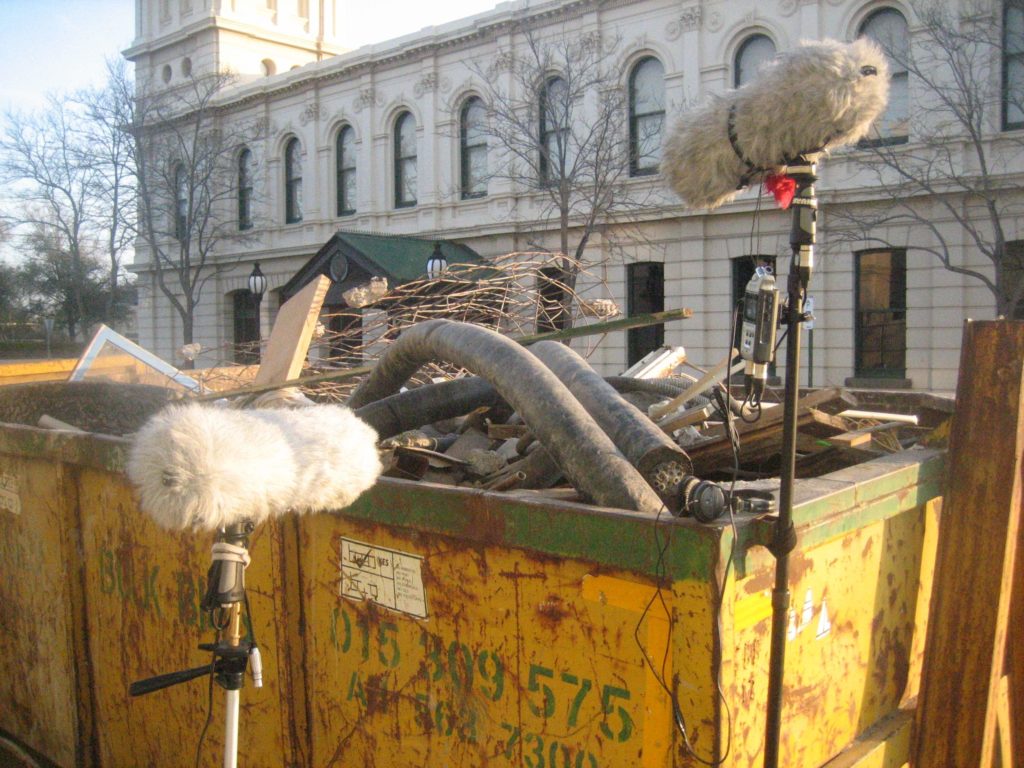No products in the basket.
Interview with Stephan Schutze – Creating Sound Effects for Weaponiser’s Battle Bundle
With our most recent release of The Weaponiser Battle Bundle we’ve taken a moment to sit down with Stephan Schutze, sound designer and creator of the extensive weapon sound effects library.

How did you get into the audio industry?
That is a pretty long story, but here’s the short version. I started as a brass player, after college I entered the Australian Army as a musician, after that and a bit of travel I returned to university to pick up some technical skills and then managed to get a position at a game studio. That was a job I initially thought would just be composing, but it quickly became a jack-of-all-audio-trades role. You learn very quickly when deadlines are looming. I developed location recording, sound design, vocal and video editing as well as orchestration skills and learnt pretty much every aspect of audio production.
What led to the creation of your company Sound Librarian?
Missing out on my dream job, quite literally.
After a rejection notice for a job I really wanted, I reflected on the fact that many people had told me I should sell my own recordings. From that, I decided to build up a library of content good enough to sell. I love the challenge of recording, but more than that I love the discoveries. It is so common to go out wanting to record X, discovering that X is sadly not as impressive as you thought it might be, but while looking for X you stumble upon Y which is the most incredible sound you have ever heard, and it will provide raw material for projects for the next decade. Seriously, this happens so often.
Fast forward 10 years and I have a collection of sound libraries that combine about 40,000 SFX and those libraries are used by companies like Disney, Skywalker Sound, EA, Activision and Warner Brothers. Its great to know that others can get the same enjoyment out of some of my recordings as I got from capturing them.

What projects have you been working on recently?
A mixture this year. I released a book on new reality audio earlier in the year, I have just finished working on the sound design for a fun rogue-like game coming out on PC, PS4 and Xbox One, I am halfway through creating a new sound fx library and I have also been doing some more sound effects work for a Hollywood trailer company. Some years you focus on a single big project, other years are filled with lots of interesting smaller tasks. I think that is why creative work is always so engaging.
What do you prefer working on – music or sound design-related projects and how do you see audio technology evolving in the future?
I think it depends on the specific project. I have worked on projects where the desired music has been incredibly enjoyable to write and produce, and yet on other projects they have been entirely sound design tasks. I will say that right now I am really enjoying the sound design and implementation for virtual reality content. There is so much we all still have to learn in that field and when you do have the time to create a good spatial audio environment the impact it can have on the audience is huge. That is an incredible challenge to work on and very satisfying.I think the biggest issue is that many people do not yet understand how different spatial audio is from traditional audio forms, and I think this is linked to people in general not quite realizing the potential for VR and AR and how different they are to other formats. Companies like Magic Leap and Facebook through their 360 Workstation and Oculus are creating some incredible content and gathering massively talented teams of people. I still think we have not quite achieved the “killer app” that will blow people’s minds for VR and AR, but these teams will make it happen eventually.
When you create a spatial audio world, you are trying to immerse someone in sound as if they were being lowered underwater. The sound must completely surround them and respond to their actions without inhibiting their experience. I love the image of someone swimming through sound in a virtual environment. The trick is to get the simple things right…and that is not so simple. Wind, rain and other weather elements are sounds every human knows intimately, even if they have never paid attention to them. So we need to get these common experience elements to sound convincing, because if we cannot get the simple things right, then more complex sound objects will be sitting on a poor foundation. I would love to create an entire open world’s sound environment for VR, there is so much you could do to bring it to life.
We are still in the early stages of spatial audio development and the various tools and plugins are not quite where I would like them. We can achieve some pretty amazing results, but we need a few more years to really nail the full spherical effect 100%. I think there is some real audio magic on the horizon and I want us to get there as quickly as possible.

What has been the most challenging but rewarding project so far in your career and why?
Wow, tough question. I think it is always really hard to narrow down to “my one favourite…” I also think it does injustice to the many wonderful things we have in our lives, so…
One of my earliest gigs was to compose over 60 minutes of music for a 70-piece orchestra for a very famous franchise. Trying to write music for Jurassic Park is a huge responsibility as the fans know and love the work so well and John Williams is such an incredible artist to try and emulate. The JP Operation Genesis project was incredibly rewarding.
But equally, being a part of an incredible team to help design how the Magic Leap One device would deliver sound, researching how AR audio could produce immersive and effective audio experiences and then prototyping a range of different test examples. That is a once in a lifetime kind of experience and the people I got to work with are some of the best in the industry.
So two examples that were massive challenges and hugely rewarding in very different ways, but there is so much that can bring you joy and satisfaction in a creative career if you work hard enough for it.
What do you like most about Krotos Audio software?
The interfaces are really fun to work with, and this is super important. If you are trying to be creative you want a simple and easy workflow, not some super-powerful tool that is non-intuitive. My choice for DAWs and other audio tools is often heavily influenced by how much I enjoy working with the tool itself.
All the Krotos tools have simple interfaces that bely the depth of functionality. This lets a new user achieve something quickly and as they get more experienced, they can dig deeper and create more complex content as they learn. Weaponiser specifically has a process I can build in very quickly, get ideas, and develop to a final product without getting bogged down in functionality that might reduce my enjoyment and creativity.
You recently designed some combat sounds for Weaponiser’s new Battle Bundle. Can you take us through the process of how you chose and recorded the sounds?
Well I needed to spend a fair bit of time playing with Weaponiser first. I wanted to understand the experience for the user, and frankly I have found the tool so much fun to work with that I am using it regularly for a range of projects. My favorite aspect about Weaponiser is the interface. I find it facilitates creativity and makes me want to play with sound design more so than many of my other tools. This was critical to understand before I went anywhere near a microphone.
The first step for actual production was to visit a scrap metal yard. I love places like this because they are essentially toy shops for sound recorders. Car wreckers, scrap metal yards, building sites, if you can get permission to safely work at these locations you can record some incredible content. At the metal yard I went through some bins of scrap auditioning various items, banging and clanging them to see what kinds of sounds I might get. Then I bought about 20 kilos of metal.
For recording, it is always a process of experimentation. It is a little like giving a child a pot of paint, they will make a mess, try different things out and eventually learn what they can create. So I try various different items. I combine them together, impact hits, scrapes, drops, slides, crashes. It is a very organic process, I try to not have specific expectations because almost always the sound combinations I thought would be great are not, and then something accidental turns out to be amazing. This is why I love location recording and Foley because you can have a basic idea of direction, but you will always discover something new.
Because the Battle Bundle needed a range of different elements, I used materials other than just metal pieces. Striking a brass rod with a heavy weighted end onto a log produced an excellent low frequency impact that works very well for the Thump tab in Weaponiser. The organic nature of the wood transferred low end vibrations really well, but also, I did my recording on our deck. This is a large outdoor area with wooden beams you walk on. So, the entire deck creates a wonderful huge sound box, so any impacts on the deck capture more low-end content than you might get working in a traditional studio. I am lucky that I live in the country where our own yard is usually as quiet as a studio space, and this allows me to use tricks like the resonating deck area.
For metal impacts for weapons or even for machinery, rusted metal is always a better option. The rust has a distinct texture that enhances scrapes and screeches. Smooth, clean metal makes very little sound when it slides against other smooth metal. In fact, in general objects, materials and even devices are much better sound providers when they are old, broken or malfunctioning. An old, busted car engine will make a much more interesting sound than a brand-new car.

What’s the greatest sound design-related tip or piece of advice you’ve ever learned?
Well “listening” is the obvious one, but that is a little easy, so I will say patience. Every aspect of crafting good audio requires patience. The waiting involved with capturing great raw material, both in time spent researching good locations and then waiting to capture the best recordings. But even in a studio when editing or designing sounds, you need to be patient with yourself and the process. You need to allow the crafting process to happen. Sometimes the sound you need may take minutes if you find good source material in your collection quickly, but other times you may need to spend hours sifting through your available source material, auditioning, editing and blending sounds to get the final result just perfect. We often do not have the luxury of lots of time, but if a specific sound just does not feel right, then be patient, leave it and move on to something else. If it is an important sound for a project, it is worth taking the time to get it right and sometimes getting it right is achieved by leaving it alone until the time is right.
Find out more about Stephan Schütze here.

